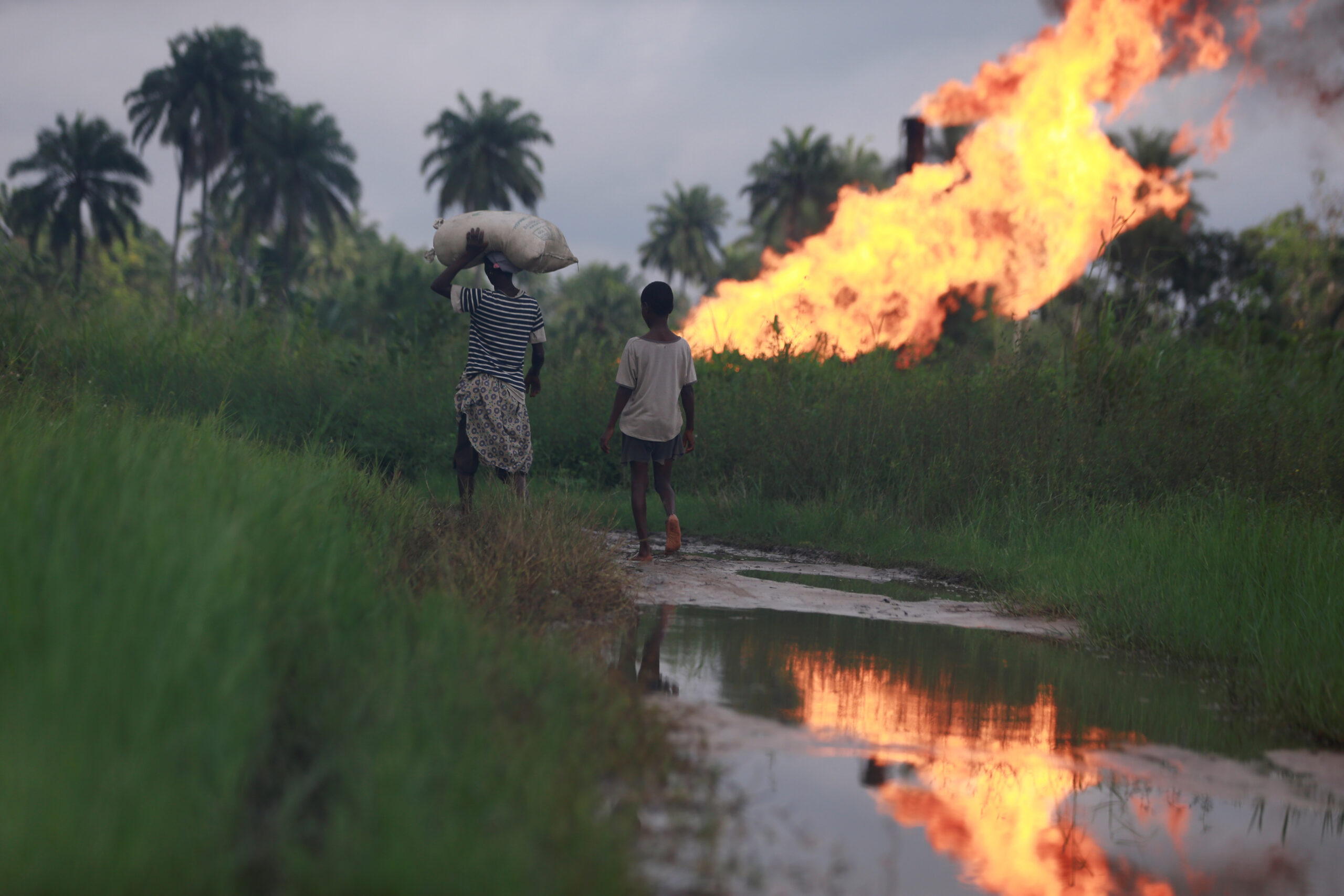中国的气候和能源政策呈现出一种悖论:在以惊人的速度发展清洁能源的同时,也未停下新建燃煤电厂的步伐。
仅在2023年,中国就新建了70吉瓦(GW)的煤电装机容量,比2019年增长了四倍,占当年全球新增煤电装机容量的95%。
煤电产能的激增引发了人们对中国二氧化碳(CO2)排放和气候目标能否实现,以及对未来出现搁浅资产风险的担忧。
由于光伏和风能发电量不稳定,中国政府将煤炭作为保障能源安全和满足快速增长的用电高峰的手段。
与此同时,中国的电力行业在成本、需求模式、监管和市场运作方面正在发生重大变化。我们的新研究表明,用于证明新煤炭产能合理性的传统经济计算方式可能已经过时。
我们使用一个简单的分析指标来评估能满足用电高峰需求的最经济方式是什么。结果表明,光伏加电池储能的组合可能是比新建煤电更具成本效益的选择。
中国电力格局发生了怎样的变化?
在过去十年里,可再生能源和电池储能的成本大幅下降,高峰时段的住宅和商业用电需求激增,电力交易市场获得了更大的吸引力。
与此同时,中国还宣布了“双碳”目标,即在2030年前实现碳达峰、2060年前实现碳中和。鉴于这些转型,建设更多未减排的煤电厂与中国的长期气候承诺相冲突,而且对满足用电需求对增长来说,可能不再是最具成本效益的选择。它还占用了清洁能源系统转型急需的资金。
替代指标如何评估成本?
我们的研究引入了一种替代指标,用于计算在满足不断增长的高峰用电需求的情况下,所需的最优成本投资。

这一指标,即“净容量成本”(net capacity cost),是满足用电高峰需求所需的基础设施投资的年化固定成本,减去该设施带给电力市场的收入,或其“系统价值”(system value)。 在该指标中,负数意味着这些投资将带来利润,而非支出。
为了探索在中国使用的情境,我们使用了一个简单的例子:在一个假定省份,高峰用电需求增加了1500兆瓦(MW)、全年需求增加了6570吉瓦时(GWh)。
然后,我们概述了满足高峰和全年能源需求的五种策略(情况),其涵盖了从严重依赖煤电到光伏和电池储能相结合的方式。
在不同的案例中,资源衡量的规模基于它们能够可靠地满足高峰供应需求和年度能源需求的程度。
- 情况1:新的煤炭发电能力可满足高峰和年度能源需求的所有增长。
- 情况2:光伏可满足70%的年度能源需求增长,煤炭可满足30%的年度能源需求增长;光伏可满足525兆瓦的高峰供应需求(由于光伏发电可能不在高峰期间,因此基于“容量可信度”进行折减),而煤电可提供剩余的975兆瓦。
- 情况3:光伏可满足所有年度能源需求增长;光伏和煤炭均可满足750兆瓦的高峰供应需求,同样通过容量可信度对光伏发电量进行折减。
- 情况4:光伏满足所有年度能源需求增长;光伏和电池均为高峰供电需求提供750兆瓦;电池提供调频储备(用于管理精确至分钟的供需差异的备用电源)。
- 情况5:光伏满足所有年度能源需求增长;广泛和电池均为高峰供电需求提供750兆瓦;电池提供能源套利(在价格或成本较低时充电,在价格或成本较高时放电)。
如下图所示,我们针对每种情况都计算了单个资源(煤、电池或光伏),以及整个系统每年获得1千瓦(kW)发电容量的年净成本,单位为人民币元。
表上半部分的资源净容量成本是指该资源的净成本(即年化固定成本减去该资源从提供能源和辅助服务,如调频,所获得的年收入)。正数表示电网运营商在增加或获取该资源时的净成本。
表下半部分的系统总净容量成本,是在每种情况下利用资源组合满足高峰需求增长的净成本。
我们用于计算系统净成本的权重是基于装机容量与高峰需求增长的比率。
不同能源组合满足用电需求的成本
| 情况 1 | 情况 2 | 情况 3 | 情况 4 | 情况 5 | |
|---|---|---|---|---|---|
| 资源净容量成本 (元/千瓦/年, 每千瓦装机容量) | |||||
| 煤炭 | 424 | 424 | 512 | ||
| 电池 | 248 | 781 | |||
| 光伏 | -128 | -128 | -128 | -128 | |
| 系统净容量成本 (元/千瓦/年, 每千瓦满足高峰用电需求且折减容量可信度后) | |||||
| 煤炭 | 471 | 306 | 236 | ||
| 电池 | 138 | 434 | |||
| 光伏 | -223 | -319 | -319 | -319 | |
| 总计 | 471 | 83 | -83 | -181 | 115 |
为了对这一简单分析进行压力测试,我们研究了不同来源的各种价格的敏感性。
由于中国的光伏价格已经很低,我们的敏感性分析主要集中在煤炭、电池和其他分析所需投入的价格上。
满足高峰用电需求最经济的方法是什么?
我们的结果表明,当电池储能提供调频储备时(情况4),光伏和储能的组合是满足高峰用电需求增长最具成本效益的选择。
在这种组合下,每获得1千瓦发电装机容量,电网运营商的成本为-181元(约-25美元或-20英镑)。
相比之下,新建煤电产能以满足高峰用电需求增长(情况1)是最昂贵的方案,每获得1千瓦装机容量的净容量成本为471元(约合65美元或52英镑)。
情况3,即大型煤电厂仅用作备用电源(几乎不发电),在中国可能出于政治原因而至少在短期内不可行。
另外两种情况(情况2和情况5)更具可比性,但鉴于自本分析报告发布以来,电池价格下降了30%以上,约为每瓦时(Wh)1元人民币(约合0.14美元或0.11英镑),因此情况5中的电池可能比情况2中的煤炭更具经济吸引力。
我们的解决方案如何助力中国实现气候目标?
我们的分析表明,为了应对不断变化的形势,在满足中国日益增长的能源需求的同时,实现其气候目标的近期战略是将电池储能纳入电力市场。
目前,中国政府允许包括电池在内的“新型储能”参与电力市场。然而,详细规定尚不明确,电池的参与可以更简单。
例如,电池储能不被允许提供“运转储备”,即为应对意外的供需误差所预留的发电量。如果允许电池储能提供运转储备,将增强其商业价值。
允许电池储能更多地参与市场将促进电池储能系统的持续创新和降低成本,同时为系统运营商提供宝贵的运营经验。
这种策略将与市场效益相符,并反映美国和欧洲近期的电力市场经验。
这也将有助于解决近期的产能和能源需求,因为电池和光伏发电通常比燃煤电厂的建设速度更快。
此外,它还有助于缓解未来新增燃煤发电与可再生能源之间的冲突。主要作为可再生能源发电备用电源的新建燃煤电厂要么很少运营,要么侵占了其他现有煤炭发电厂的运营时间和净收入,从而产生新搁浅资产的风险。
通过继续进行电力市场改革,也将促进对可再生能源发电和电力储存进行更有效的投资。
允许市场制定批发市场电价、允许可再生能源发电和电力储存参与批发市场,这可以提高其收入和利润。
此外,改革还将鼓励高效利用储能,这是我们的关键发现。储能可以为电力系统提供多种功能;批发电价有助于引导储能运营以最低的成本实现具有最高价值的功能。
中国国家能源局最近发出指令,要求将新型储能设施(非抽水蓄能)纳入电网调度运行,这是向我们概述的改革迈出的一步。
可能需要进一步确定适当的补偿机制,例如在某些省份对此类储能设施提供的所有服务进行容量补偿,以促进这些储能设施的可持续发展和并网。
最后,仅靠增加供应不太可能成为满足中国电力需求增长的最低成本方式。提高终端使用效率和“需求响应”也有助于降低供电的总体成本。
随着中国电力市场改革的不断深入,连接多个省份的区域市场设计,以及鼓励省份间资源共享的区域资源充裕性规划,也有助于以最具成本效益和最低碳的方式满足中国不断增长的用电量和高峰需求。
The post 嘉宾来稿:满足中国增长的用电需求 光伏加储能“比新建煤电更实惠” appeared first on Carbon Brief.
Climate Change
DeBriefed 14 November 2025: COP30 DeBriefed: Finance and 1.5C loom large at talks; China’s emissions dip; Negotiations explained
Welcome to Carbon Brief’s DeBriefed.
An essential guide to the week’s key developments relating to climate change.
This week
Finance and 1.5C dominate talks
AGENDA ADOPTED: Negotiations at the COP30 UN climate talks began in the Brazilian city of Belém this week, attended in person by Carbon Brief’s Daisy Dunne, Josh Gabbatiss and Anika Patel. The Brazilian hosts scored an unexpected early win by dodging an “agenda fight” over proposals to add various contentious issues to the official docket. Despite the neat footwork, four issues kept off the agreed agenda – climate finance; emissions reporting; trade measures; ambition and 1.5C – still loom large, having merely been diverted into “presidency consultations”.
PRESIDENCY PROMISES: By Wednesday, the presidency was promising “good news” at a plenary later that day, which had been due to offer an update on progress with the four extra items. Instead, it ended abruptly, with COP30 president André Corrêa do Lago promising to say more at another plenary scheduled for tomorrow. It remains unclear how the presidency intends to deal with these thorny issues, leaving the COP rumour-mill in full swing.
MINISTERIAL MAGIC: Aside from the extra issues, the official agenda at COP30 already has more than 100 items to contend with, including how to track progress on adaptation and how to ensure a “just transition” as emissions-cutting measures are implemented. (You can follow them all via the Carbon Brief text tracker.) While draft texts have started to emerge, many items remain stalled, with persistent divisions along familiar lines (see below). Negotiators will be hoping that ministers arriving over the weekend are primed to unlock progress. Brazil has appointed pairs of these politicians to push for deals in key areas.
Around the world
- Ethiopia has said it will host COP32 after beating out a bid from Nigeria, Reuters reported. Turkey and Australia are still in deadlock over who should host COP31, with a decision due by the end of these talks, BBC News reported.
- China will not contribute to Brazil’s Tropical Forest Forever Facility, Bloomberg reported, while Devex said two multilateral development banks are considering paying in. More than $5.5bn has been pledged so far, which BusinessGreen noted is “well short” of a $25bn target. The fund was labelled a “false solution” by some Indigenous and civil society groups.
- After Brazilian president Luiz Inácio Lula da Silva called for a “roadmap” away from fossil fuels ahead of COP’s opening, rumours are swirling over how this might take shape. A new declaration spearheaded by Colombia and a roadmap with backing from a number of countries, including Denmark, the UK, France, Kenya and Germany, are being floated as possible options.
- China is currently among the countries pushing for “provision of finance from rich countries and unilateral trade measures” to be included on the agenda, reported Climate Home News. Chinese delegation head Li Gao told Agence France-Presse it is “crucial” for developed countries to fulfil their $300bn commitment.
- Dozens of Indigenous protesters forced their way into COP’s blue zone on Tuesday night, expressing anger at a lack of access to the negotiations, Reuters said. On Friday, a peaceful protest blocked the entrance to the blue zone, causing lengthy queues as delegates were forced to use a side door.
344%
The rise in the global use of solar from 2024 to 2035 under “stated policies”, according to Carbon Brief’s analysis of the latest World Energy Outlook from the International Energy Agency.
Latest climate research
- The 2025 Global Carbon Budget, covered in detail by Carbon Brief, finds that CO2 emissions from fossil fuels and cement will rise 1.1% in 2025 | Earth System Science Data
- In its November 2025 update, Climate Action Tracker says that its projections of global warming by 2100 have “barely moved” in four years | Climate Action Tracker
- The AI server industry in the US is unlikely to meet its 2030 net-zero goals “without substantial reliance on highly uncertain” carbon offsets | Nature Sustainability
(For more, see Carbon Brief’s in-depth daily summaries of the top climate news stories on Monday, Tuesday, Wednesday, Thursday and Friday.)
Captured

China’s carbon dioxide emissions have “now been flat or falling for 18 months” since March 2024, analysis for Carbon Brief has found, due, in particular, to the transport, cement and steel sectors. The analysis has been covered widely in publications including China’s Global Times, the New York Times, Financial Times, Reuters, Bloomberg and on the frontpage of the Guardian.
Spotlight
What to expect from COP30 talks
This week, Carbon Brief’s expert team walk through what is happening with the biggest issues being negotiated at COP30.
‘Cover text’
Can you judge a COP by its cover text? At COP, the presidency has the option to pull together a new negotiated “cover text”, an overarching political overview of decisions agreed at the summit, along with other issues not on the agenda that it wants to draw attention to.
COP30 president André Corrêa do Lago might have dismissed a catch-all “cover decision” as a “last-minute solution” ahead of COP and dodged the question since, but other parties have been less shy in hinting that a cover text is, indeed, coming.
Cover decisions are often the product of fraught negotiations, high stakes, too little time and too many parties to accommodate.
This year, there is added pressure to address what is happening in the wider world outside the “negotiations” and to politically signal that the UN climate process is alive and making progress, despite the withdrawal of the US.
What elements could go into it? As a member of the “BASIC” group of nations comprising Brazil, South Africa, India and China, trade measures could find a place. But ideas pushed by Brazilian president Lula for new “roadmaps” away from fossil fuels and deforestation might find a place. Finance, however, could be much trickier to fit in.
Adaptation
One of the key expected outcomes of COP30 is agreement on a list of 100 indicators that can be used to measure progress under the “global goal on adaptation” (GGA). After two years of work by experts, negotiations got underway with a suggested list that had been whittled down from nearly 10,000 possible indicators.
Despite the focus on the GGA by the COP30 presidency and others, division has quickly emerged around the timeline for the adoption of the indicators. The African Group has notably requested a two-year work programme to further refine the list, while other parties are pushing for the indicators to be adopted in Belém as planned.
On Wednesday, an informal note was published that compiled elements for a draft decision. Significantly, for the first time under the GGA, this included a call for developed countries to “at least triple their collective provision” of adaptation finance by 2030, with a target to reach $120bn. This echoed a suggested target originally set out by the negotiating group of least developed countries (LDCs), supported by the African Group, Arab Group and the Association of Latin America and the Caribbean (AILAC) countries.
Just transition and mitigation work programmes
Over the past year, civil society groups have been calling for the establishment of a mechanism to enact the agreed UNFCCC principles of a “just transition”. This gained momentum on Wednesday within negotiations of the just transition work programme (JTWP), when the G77 and China called for the development of the “Belem Action Mechanism” (BAM).
Chile, the Alliance of Small Island States (AOSIS), India and other developing countries supported the mechanism. However, Norway, the UK, Australia and Japan pushed back. Other long-standing points of contention have also raised their heads, including around unilateral trade measures and references to fossil fuels and aligning to global temperature goals.
Within the mitigation work programme (MWP) talks, negotiators are looking to build on two dialogues held this year. The main themes at COP30 are the links between the MWP and the global stocktake (see below) and the future of the programme itself.
Old divisions have emerged in negotiations, focused predominantly on the mandate of the MWP and the potential development of a digital platform as part of its continuation.
UAE dialogue
The landmark outcome of the first “global stocktake”, agreed at COP28 in Dubai, called on all countries to contribute to a “transition away from fossil fuels”. It also mandated a “UAE dialogue” on “implementing the global stocktake outcomes”.
Two years later, countries remain deadlocked over what this dialogue should discuss. Many want it to cover all parts of the stocktake, including the energy transition, while others want an exclusive focus on climate finance. They also disagree on whether the dialogue should have substantive outcomes, including a formal process to keep discussing the issues raised.
Having failed to reach agreement at COP29 last year, the latest draft text shows parties are just as far apart in Belém, nearly halfway into the summit.
Finance
Climate finance for developing countries does not occupy a high-profile position in the formal COP30 negotiations. Yet, as demonstrated by its role in adaptation talks and the agenda dispute, finance still has the potential to derail proceedings.
Ahead of the conference, the COP30 and COP29 presidencies released their “Baku to Belém roadmap”, exploring how finance could be ramped up to $1.3tn by 2035.
An influential group of experts also released new analysis showing a “feasible path” to this goal, leaning on private finance. They said this work would provide a “valuable signal” to those in the finance sector.
However, with no position in the Belém negotiations, it was unclear how – or whether – the roadmap would be taken forward by governments beyond COP30.
Instead, finance negotiators have been occupied with technical matters, but these still show signs of division. For example, some developing-party groups have pushed back against an EU priority goal to extend a “dialogue” about “making finance flows consistent” with climate objectives.
Watch, read, listen
UNDER THREAT: The Bureau of Investigative Journalism told the story of Kim Rebholz – an environmentalist who was threatened for his work curbing illegal logging in Democratic Republic of Congo’s mangrove parks.
SPOTLIGHT ON STARMER: YouTuber Simon Clark has published a video of himself interviewing prime minister Keir Starmer about the UK’s actions on climate and nature, at COP30 and domestically.
INSIDE COP:Outrage and Optimism is running a “special edition” podcast series in partnership with the COP30 presidency, bringing “exclusive, behind-the-scenes access” to the conference.
Coming up
- 14-21 November: UN Climate Change conference (COP30) heads into its crucial second week in Belém
- 15 November: Informal stocktaking plenary of COP30 talks by the Brazilian presidency
- 17 November: Launch of the Global Methane Status Report
Pick of the jobs
- International Energy Agency, intern, China programme | Stipend: €1,000/month. Location: Paris
- Channel 4, sustainability production executive | Salary: £48,125. Location: Bristol, Glasgow or Leeds, UK
- World Bank, environmental specialist | Salary: “GF” grade. Location: Yaounde, Cameroon
- Greenpeace, climate and energy campaigner | Salary: Unknown. Location: Bangkok, Thailand
DeBriefed is edited by Daisy Dunne. Please send any tips or feedback to debriefed@carbonbrief.org.
This is an online version of Carbon Brief’s weekly DeBriefed email newsletter. Subscribe for free here.
The post DeBriefed 14 November 2025: COP30 DeBriefed: Finance and 1.5C loom large at talks; China’s emissions dip; Negotiations explained appeared first on Carbon Brief.
Climate Change
COP30 draft text includes energy transition minerals in UN climate first
For the first time in UN climate negotiations, countries attending COP30 in Belém, Brazil, are grappling with the implications of extracting minerals required to manufacture batteries, solar panels and wind turbines.
On Friday, a draft text on ensuring that the transition to clean energy systems is just and sustainable – a negotiation stream known as the Just Transition Work Programme – recognised “the social and environmental risks associated with scaling up supply chains for clean energy technologies, including risks arising from the extraction and processing of critical minerals”.
It also “recalled” the principles and recommendations of a UN expert panel, which called on governments and industry to put human rights at the core of the minerals value chain, from mining to recycling. The UN panel report, published last year, set out key principles to ensure that mineral supply chains benefit countries and local communities endowed with resources, create jobs, diversify economies and generate revenue for development.
“For the first time, minerals are on the main stage of COP negotiations – no longer a side show,” said Melissa Marengo, a senior policy officer at the Natural Resource Governance Institute (NRGI).
Demand for metals such as copper, cobalt, lithium, nickel and graphite that are vital for manufacturing clean energy transition technologies is soaring. But extracting them creates both new economic opportunities, as well as social and environmental risks for resource-rich countries.
Around the world, increased mining activity has fuelled environmental destruction, deforestation and conflict with communities.
Last week, Brazil’s President Luiz Inácio Lula da Silva told leaders gathered in Belém that it is “impossible to discuss the energy transition without talking about critical minerals, essential to make batteries, solar panels and energy systems”. Brazil has the world’s second-largest reserves of rare earths, which are used to manufacture permanent magnets for EV motors and wind turbines.
Developing countries have called for the impacts and opportunities of mining minerals for the energy transition to be included in the text. African countries, which hold more than 30% of the world’s critical mineral reserves, have been vocal on the issue. The African Group of Negotiators told COP30’s opening plenary that Africa’s resources “must translate into tangible benefits”.
“Water is worth more than lithium,” Indigenous Argentine community tells COP30
Earlier this week, the UK, backed by Australia and the European Union, proposed language on the importance of fair, transparent, traceable and environmentally sustainable mineral supply chains for the energy transition.
The whole draft text, which is described as an “informal note” and is meant as the basis for negotiations on the Just Transition Work Programme, is bracketed, meaning that none of it has yet been agreed by countries.
Yet, campaigners widely welcomed the inclusion of minerals in the document as “a real first step”.
Marengo said the draft reflected many of the priorities voiced by producing countries, communities on the frontline of mining projects and Indigenous peoples across developing countries.
“But the real test begins now,” she said. “Parties must hold the line to secure strong social and environmental safeguards, fair value creation, and a genuinely just approach to transition minerals” that focus “on prosperity for producing countries and communities, and not only on supply security,” she added.


The text notes that affected communities must be “central” to the design and implementation of climate measures and recognises the importance “of sustainable patterns of consumption and production”, including through circular economy approaches.
It also acknowledges “the importance of the rights of Indigenous Peoples” including self-determination and their right to free, prior and informed consent for development projects that affect them, in addition to “the specific rights and protections for Indigenous Peoples in voluntary isolation and initial contact”, which cannot give their consent to mining on their land.
More than half of energy transition mineral reserves are estimated to be located on or near Indigenous land.
“We are making history, as no previous COP decision has ever recognised the rights of Indigenous Peoples in Voluntary Isolation and Initial Contact so clearly,” said Bryan Bixcul, global coordinator of the Securing Indigenous Peoples’ Rights in the Green Economy (SIRGE) coalition. “Any attempt by countries to remove or weaken this text would represent a major setback for the fulfillment of those rights,” he said.
SIRGE has called for the text to go further still and establish exclusion or “no-go” mining zones on the land of uncontacted Indigenous groups.
COP30 could confront “glaring gap” in clean energy agenda: mining
Meanwhile, the inclusion of language on the “transition away from fossil fuels” remains deeply contentious, with references to fossil fuels only included as “options” in the text, meaning not everyone agrees to it being there. Saudi Arabia, large emerging economies such as India and China, and African countries opposed references to fossil fuels, according to observers present in the negotiating rooms.
To help deliver a just energy transition beyond COP30, the draft text includes a demand from an alliance of 134 developing countries – known as the G77 and China – to establish a mechanism that could act as a one-stop shop to provide countries with technical assistance and help foster international cooperation.
The idea has been resisted by developed countries, which argue that creating another institution would take a long time and risk duplicating the work of existing initiatives. Alternative options include “improving existing modalities”, “developing a policy tool box” and “developing guidance” to support countries deliver just transitions.
These alternatives amount to “tweaking”, Teresa Anderson of ActionAid International told reporters. “We know that if those modalities worked, we would not be in the crisis we are facing now.”
The post COP30 draft text includes energy transition minerals in UN climate first appeared first on Climate Home News.
COP30 draft text includes energy transition minerals in UN climate first
Climate Change
Africa wants wiggle room on energy transition as funds fall short
African countries at COP30 say a lack of climate finance to speed the transition to renewable energy means they should be given more leeway to use their fossil fuel resources to benefit their people.
As support grows at the climate talks in Belém for a global roadmap on transitioning away from fossil fuels, championed by Brazil’s president and environment minister, leaders and officials from Nigeria, Ghana and Mozambique have said African nations should be allowed to keep using their fossil fuel resources to develop their economies.
Africa receives less than 2% of international clean energy investment, and badly needs funding to help increase access to power supplies, which some 600 million people still lack, according to the International Energy Agency (IEA).
Carlos Lopes, COP30’s special envoy for Africa, told Climate Home News that while the priority is still for Africa to transition as quickly as possible to renewables, “if the funding is not coming, Africans have to be pragmatic and will have to use any possibilities to enhance their development”.
“Africans are basically trapped not because of infrastructure but because of the financing schemes that are not allowing them to move as fast as they should wish for the new form of economy,” Lopes said, adding that too much global finance was going into fossil fuels rather than renewables.
The IEA’s “Financing Electricity Access in Africa” 2025 report found that less than $2.5 billion was committed for new electricity access connections in sub-Saharan Africa in 2023. Meanwhile, financing has been concentrated in a small number of countries including Nigeria, South Africa and Kenya, and has been skewed towards urban areas.
African leaders call for “room” for fossil fuels
Several African countries have lowered ambition for cutting emissions in their latest national climate plans (known as NDCs), citing a lack of funding that has hampered climate action, a message that was echoed during the leaders’ summit in Belém last week.
Ghanaian minister Emmanuel Armah-Kofi Buah said “conversations [on phasing out] must be approached with strategic care and profound understanding”.
“To deny Africa the strategic use of these [natural] resources is to deny our right to develop, to light our homes and to power industries,” Buah, Ghana’s lands minister and acting environment minister, told the leaders’ summit.
Mozambique President Daniel Chapo, meanwhile, supported the idea of a just transition, but one that gives Africa the “economic and political room” to use its natural resources to benefit its people.


Nigeria, Africa’s biggest oil producer, had already made clear in its NDC that it planned to boost the use of natural gas as a so-called transition fuel.
Vice President Kashim Shettima told the leaders’ meeting that Nigeria would use natural gas “to stabilise power and drive industrial growth” while promoting clean energy by expanding solar and off-grid solutions for rural electrification.
A just transition made for Africa
The world agreed for the first time to begin “transitioning away from fossil fuels” two years ago at COP28 in Dubai, but a plan to implement that pledge at the global level has yet to be sketched out.
If countries decide to work on one, it is likely that poor countries will ask for rich nations to set earlier deadlines to reduce their production and use of coal, oil and gas.
Nafi Quarshie, Africa director for the non-profit Natural Resource Governance Institute (NRGI), said any fossil fuel phase-out targets in a roadmap must be “concrete and time-bound”, and reflect different realities.
“Africa cannot be talking about phase-out when it has not phased in,” she told a press conference on Wednesday. “Africa’s pathway cannot mirror Europe’s or America’s. The transition in Africa must prioritise energy access, job creation, diversification and development, not just emissions reduction targets.”
Until the COP process delivers on its financial promises to Africa, the continent cannot be asked to abandon the fossil fuels that currently provide a huge chunk of government revenues in some economies “without credible, accessible, or predictable financial support to replace them,” Quarshie added.
The post Africa wants wiggle room on energy transition as funds fall short appeared first on Climate Home News.
Africa wants wiggle room on energy transition as funds fall short
-
Climate Change3 months ago
Guest post: Why China is still building new coal – and when it might stop
-
Climate Change2 years ago
Spanish-language misinformation on renewable energy spreads online, report shows
-
Greenhouse Gases3 months ago
Guest post: Why China is still building new coal – and when it might stop
-
Climate Change Videos2 years ago
The toxic gas flares fuelling Nigeria’s climate change – BBC News
-

 Greenhouse Gases1 year ago
Greenhouse Gases1 year ago嘉宾来稿:满足中国增长的用电需求 光伏加储能“比新建煤电更实惠”
-

 Carbon Footprint2 years ago
Carbon Footprint2 years agoUS SEC’s Climate Disclosure Rules Spur Renewed Interest in Carbon Credits
-
Renewable Energy4 months ago
US Grid Strain, Possible Allete Sale
-
Climate Change2 years ago
Why airlines are perfect targets for anti-greenwashing legal action


















